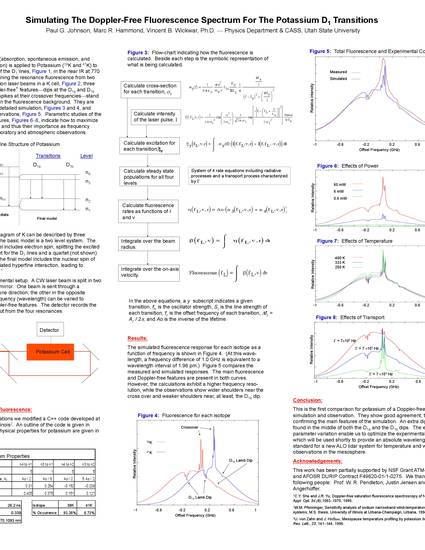
Radiation theory (absorption, spontaneous emission, and stimulated emission) is applied to Potassium (39K and 41K) to examine details of the D1 lines, Figure 1, in the near IR at 770 nm. When examining the resonance fluorescence from two counter-propagation laser beams in a K cell, Figure 2, three prominent “Doppler-free” features—dips at the D1a and D1b resonances and spikes at their crossover frequencies—stand out superposed on the fluorescence background. They are examined with a detailed simulation, Figures 3 and 4, and compared to observations, Figure 5. Parametric studies of the Doppler-free features, Figures 6–8, indicate how to maximize their prominence, and thus their importance as frequency references for laboratory and atmospheric observations.

Poster presented at the Utah State University Student Showcase for Undergraduate Research. PDF of poster is available for download through link above.